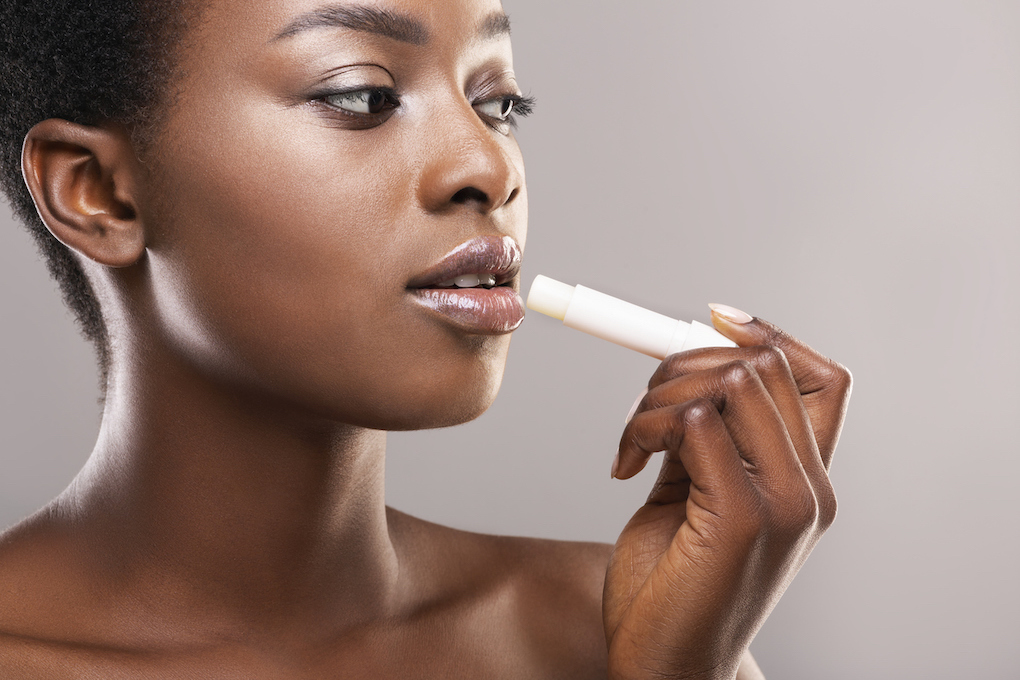Table of Contents
The lips are a vulnerable area of the body because they’re constantly exposed to the elements. The sun, wind and extreme temperatures can leave your lips dry, cracked, and depleted over time.
The aging process can also compromise your smile, sending you on an urgent search for balms to soothe and restore your lips.
Unfortunately, many companies inadvertently prey on this urgency, advertising products as “all-natural” when in reality, some of these products may be doing more harm than good to your skin.
Below we will explore some of the most common ingredients in lip balms that you should consider avoiding in order to protect your lips and keep your body toxin-free.
While you may be tempted to grab for the best-looking lip balm or the prettiest packaging, you’re better off checking the label and doing your due diligence.
Your lips will whisper their gratitude to you, and may even give you a self-kiss.
Worst ingredients found in lip balm
Some of the worst ingredients typically found in lip balms are the following. By worst ingredients, we mean that a) some studies suggest that these ingredients can cause harm, and b) there are better alternatives available that work just as well or better.
1. Parabens
- Methylparaben
- Propylparaben
- Butylparaben
- Ethylparaben
You may have heard of parabens on the news before and always wondered exactly what these cute-sounding compounds were.
Parabens can mimic estrogen in the body, potentially disrupting your endocrine system’s balance, which in turn may lead to an increased risk of certain types of cancer in women and reduced sperm production in men.
Lip balms are not the only cosmetic products containing parabens, either. Somewhere around 80% of all body care items feature parabens.
“Men who have been exposed to common chemicals known as parabens have lower testosterone levels and more sperm that are abnormally shaped and slow moving, according to a study that suggests these ingredients may contribute to infertility.”
Reuters, August 17, 2017, “Common chemicals in cosmetics, soaps tied to poor semen quality”
2. Petroleum
Petroleum is used in beauty products because it is an inexpensive and durable compound that doesn’t typically cause skin allergies.
However, when petroleum is refined, toxic chemicals are used, some of which can wind up in the body.
Polycyclic Aromatic Hydrocarbons are byproducts of the refinement process that—depending on the length and degree of exposure—may increase your risk of cancer.
Additionally, petroleum on the skin creates an impenetrable barrier that can trap bacteria in the pores, which may actually worsen your complexion.
Common sense may tell you that an ingredient that sounds like “gasoline” is harmful, but now you know exactly why.
3. Phenol, Menthol, and Salicylic Acid
These ingredients typically dry out the skin rather than moisturizing it. By adding phenol, menthol, and salicylic acid to lip balms, companies can actually cause more of the initial problem, ensuring you will continue to buy their products.
These compounds may also cause the lips to tingle, feel irritated, or feel temporarily numb. You may recognize the ingredient phenol from harsh chemical peels meant to exfoliate the skin.
But if you over-exfoliate the lips, you are actually left with less protection against the sun and wind than before.
4. Fragrance
Added fragrances may make your beauty products smell enticing, but they can also cause rashes, eczema, and irritation to the skin.
Fragrances can be interpreted as a host of hidden toxins that can compromise your health.
Try to opt for the “fragrance-free” version of your favorite products, whether lip balms, moisturizers, deodorants, or sunscreens.
5. Propylene Glycol
This ingredient cannot be properly broken down in children’s bodies, so both kids and pregnant moms should likely avoid propylene glycol.
The compound can cause CNS (central nervous system toxicity), seizures, cardiac arrhythmia, agitation, and lactic acidosis, among other ailments.
6. Alcohol
If you’ve ever used rubbing alcohol to clean a wound or a surface, you can remember how dry and scaly your skin got afterward.
Alcohol in lip balm can dry out the skin, counteracting the moisturizing results you seek.
Companies may add alcohol to their products to initiate a “tingling” feeling, hoping it will convince the consumer that the item is working, but in truth, drying out the skin is a tactic to make you buy more and more units, similar to selling sugary sodas to quench thirst.
The Takeaway
The number one rule to remember with lip balms is that if you wouldn’t put it in your mouth, then it shouldn’t be in your beauty products.
Although you don’t eat any of your lip balm, the product will be absorbed through your skin, so you want to ensure that you’re not inadvertently allowing toxins and carcinogens to enter your body.
Try instead to choose all-natural products that nourish and protect the lips.
These might include:
- Raw Virgin Coconut Oil – Smooths, heals, and protects the lips
- Unrefined Cocoa Butter – Helps seal in lip moisture and halts the signs of aging
- Plant-based Wax, Such as Candelilla – Helps ensure the lip balm doesn’t melt
- Vitamin E – Softens the lips naturally while boosting circulation
- Essential Oils – These can replace harmful chemical “fragrances,” but aren’t for everyone.
Nature is a bountiful resource that allows us to benefit from products that keep us healthy, beautiful, and in harmony with the planet.


